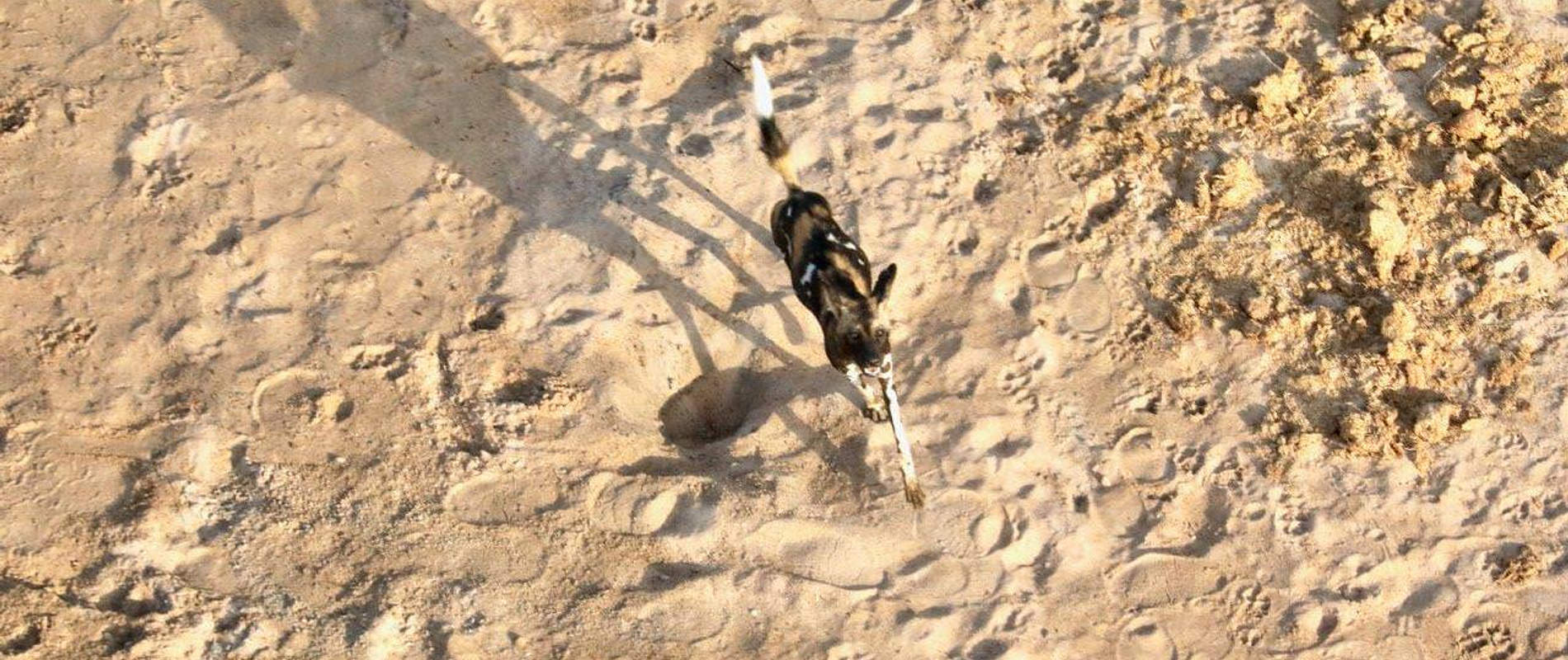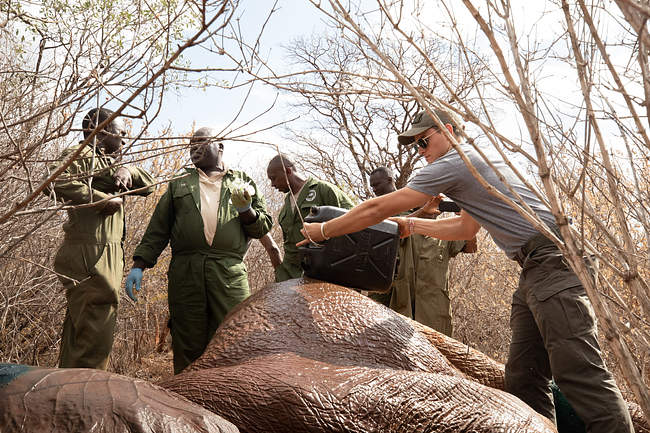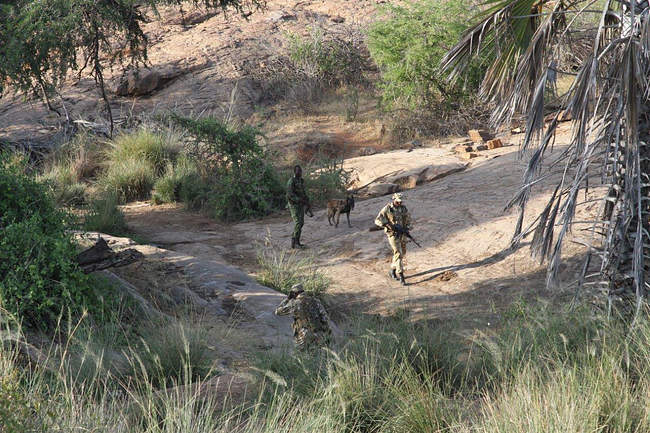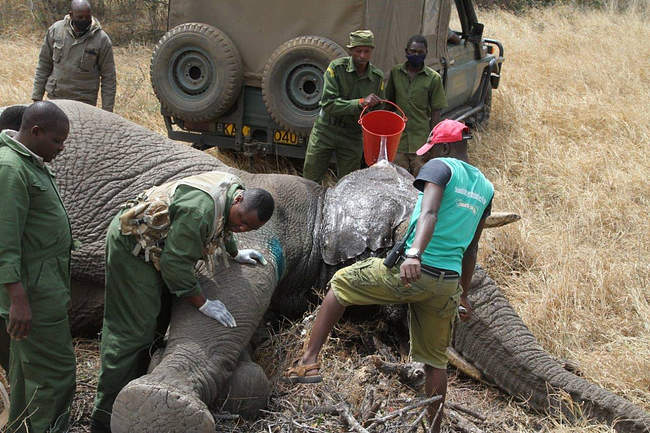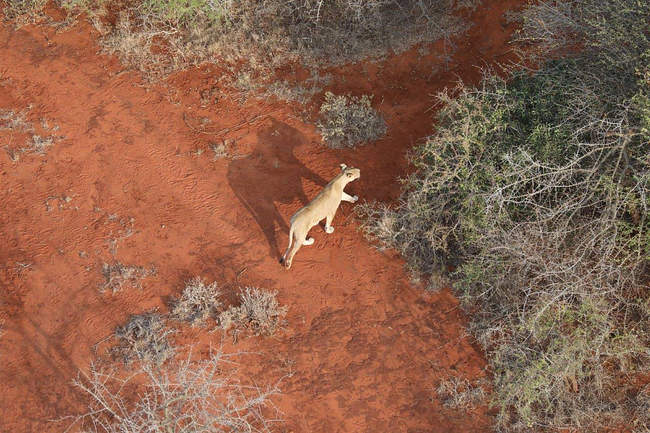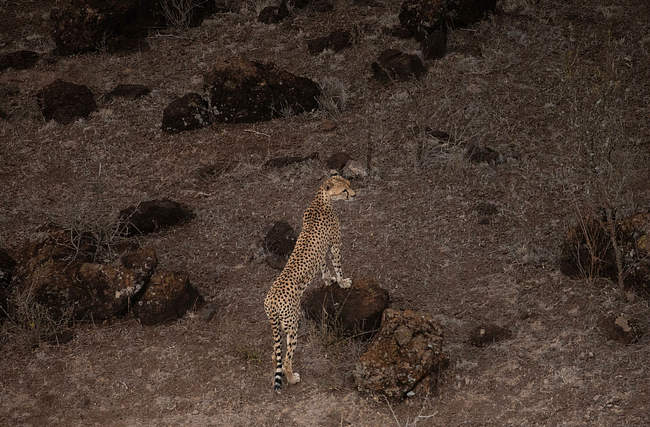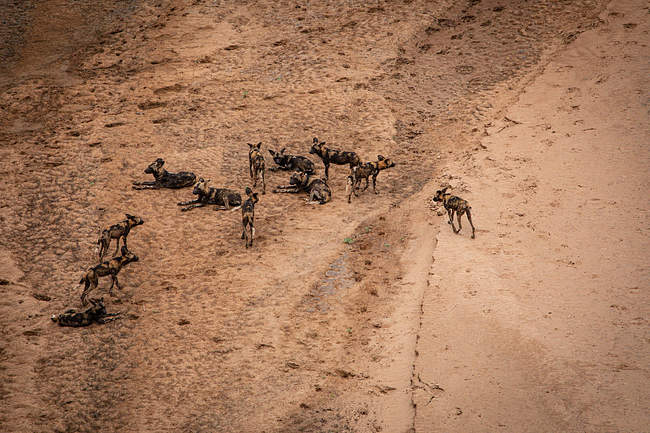June was another busy period for our Aerial Unit, as veterinary activities dominated the month's activities.
Pilots provided aerial assistance to several veterinary treatments across Kenya, with a notable number of snare victims. Yet again, we were reminded of the indiscriminate nature of these simple-yet-lethal wire loops, as victims ranged from towering giraffes to elephant calves.
An operation in Tsavo West served as a potent reminder that no creature is immune to litter — not even the world’s largest land animal, the elephant. After a limping bull elephant was reported, our fixed-wing pilot located the patient and our helicopter supported the SWT/KWS Tsavo Mobile Vet Unit's treatment. It transpired that a carelessly discarded length of fenceline had turned into a snare-like noose, slicing into the bull's foot. Fortunately, he is expected to make a full recovery. Read the full story here.

Some creatures were not so lucky. The helicopter responded to a snared giraffe in Ishaqbini (Garissa County), but as the wire had severed the poor creature's foot, the KWS veterinarian was left with no option but to euthanise the patient. In the Mara, an elephant was speared in the head. While the attack left him blind in one eye, rapid veterinary intervention saved his life. That same day, a giraffe with a snare around her neck was also given a second chance. More details on the two Mara cases can be found here.
The Aerial Unit attended to a very unusual case in June, in which a lion escaped from her cage while being moved from community lands in Amboseli. The SWT helicopter responded to the incident, helping KWS recapture the lion so she could be successfully translocated to Tsavo West National Park.
One orphaned elephant was rescued by the SWT helicopter in June, after Wildlife Works reported a lone calf on the Taita Ranches.

Incidents of human-elephant conflict were low, with only three cases attended to in June. As in previous months, illegal livestock numbers remained relatively under control in Tsavo East, with small incursions identified early by aerial patrols, allowing KWS to quickly respond. On the Tsavo West side, the area north of the Maktau-Taveta Road was proactively managed by KWS, but the large number of dispersed livestock to the south has proved harder to combat.
Charcoal production on Galana and Kulalu Ranches continues to increase dramatically. In just one day, 6,100 sacks of charcoal were sighted on Galana, along with six loaded trucks (each with an estimated carrying capacity of 300 sacks) and 95 kilns in various stages of production.
Only one poaching incident was observed by the Aerial Unit, a two-man hunting party with 9-10 dogs operating on Kulalu Ranch. Despite a rapid response from a nearby SWT/KWS Anti-Poaching Team, the poachers were able to disappear into thick bush and evade capture.
A single elephant carcass was discovered in June, which was presumed to have died of natural causes. Coordinates were provided to KWS for the retrieval of the ivory.
Wildlife sightings in the month included a slew of wild dogs, along with several lions and leopards. During one memorable patrol, a pilot spotted an unusually large gathering of giraffes, with a single tower numbering 45 individuals. The most unique sighing was that of a melanistic serval in the northern sector of Tsavo East. A newborn black rhino, who was about one month old, was also seen during a routine patrol in Tsavo West. Every new rhino is a victory, and testament to the hugely successful effort by KWS to revive this critically endangered species.

